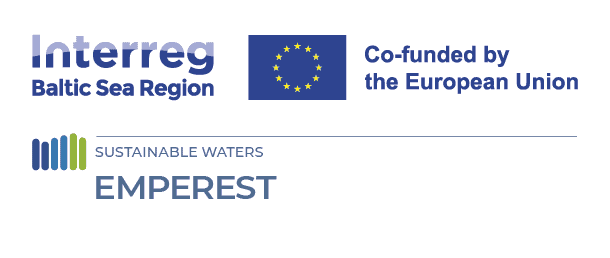
Interview with MEP Nils Torvalds on updating the Wastewater Treatment Directive
03 November 2023
Mr Torvalds has been the rapporteur for the UWWTD update, and in June 2023, he received the Environment and Climate Action Award from The Parliament Magazine.
UBC SCC: Could you explain the main focus of the Urban Wastewater Treatment Directive and why is it important to update it?
Nils Torvalds: The main focus is to update wastewater treatment rules to modern challenges. Both in terms of nutrient reductions and micro-pollution removals. The Directive is from 1991 and has improved the state of the European waterbodies, but now it’s necessary to take the next steps.
Some Member States have a lot more stringent rules than others on wastewater treatment, while others are falling behind. It’s important that everyone across EU have access to the same quality of water, no matter where you live, especially considering the changes in water access as a consequence of climate change. The wastewater sector should also contribute towards the EU’s goal of climate neutrality by 2050, through increased energy production and better water management.
UBC SCC: What has been the most difficult part of the updating process so far and what might be the foreseen major barriers in the implementation process in the future?
Nils Torvalds: The biggest challenge will be to find the right balance between as high level of ambition as possible and a realistically implementable legislation in all Member States. The current Directive is over 30 years old, so ensuring that this revision stands the test of time in a good manner, and takes into account future challenges, has not been easy. Everyone wants clean water but as the updates will require considerable investments, we also need to be realistic with what we are proposing.
Quaternary treatment – the removal of micro-pollutants from wastewater – is a relatively new technology and today mostly deployed for research projects. Ensuring that the high costs for this technology do not hinder the roll out of this needed treatment stage across Europe will also be a challenge.
UBC SCC: Our project EMPEREST focuses specifically on the organic micropollutants removal, including the development of methodologies for monitoring, testing technologies for advanced wastewater treatment, and performing local risk assessment. Could you explain major changes to the treatment of micropollutants, incl. PFAS from wastewater under the updated Directive? Will the new Directive propose specific restrictions or limits on micropollutant concentrations in wastewater?
Nils Torvalds: In the current Directive, there are no requirements for removals of micro-pollutants. While some micro-pollutants can be removed through secondary and tertiary treatment, a fourth treatment stage – quaternary treatment – is introduced in the revision of the Directive to tackle micro-pollutants more efficiently.
The updated Directive sets removal rates of micro-pollutants from wastewater to 80% in relation to the load of the influent. It sets out monitoring requirements of a specific set of substances that act as indicators for micro-pollutant removals on a broader level. When these substances are removed to 80%, a lot more substances can be considered to have been removed in the same processes.
The revision of the Directive does not set any rules for PFAS removals. PFAS is a big concern but there is no easy solution for removing them from wastewater. Existing technologies are not able to efficiently and cost-effectively remove PFAS, meaning mandatory removal targets would be very difficult to set. However, Article 21 sets monitoring requirements for certain PFAS-chemicals already monitored in the Drinking Water Directive. The Parliament, in its position, also asks the Commission to review the need for PFAS removal targets in the upcoming revisions of the Directive. In any case, the Commission is expected to present a wide ban on PFAS in the near future, hopefully making its removal from wastewater less pressing.
UBC SCC: What would be your advice for local authorities when considering the PFAS pollution, monitoring and elimination?
Nils Torvalds: As mentioned in the previous answer, there are no requirements for PFAS removals in this legislation and they would be difficult to implement. Regarding monitoring, the Drinking Water Directive obliges operators to adhere to parametric values of PFAS in the drinking water. Many drinking water operators are also wastewater operators, so ensuring there is coherence between the two sides will be important going forward.
I am aware of how harmful PFAS are and how commonly they exist among us. Just like most of us, I have PFAS in my blood and we have to ensure that this will not become a growing issue in our societies. While it will be extremely difficult to achieve in several strategic fields, the most efficient way of PFAS elimination, would be an introduction of a ban, also mentioned in the previous answer.





